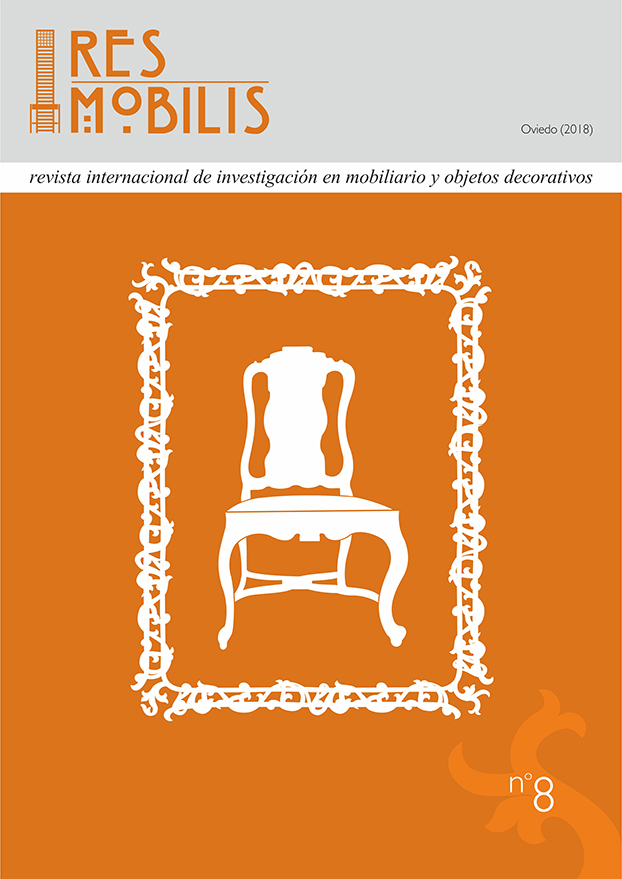Abstract
Old English proverbs such as Cleanliness keeps away from diseases and mental sickness or Cleanliness is the way to be healthy, wealthy and wise are indicative of the importance of the concept of cleanliness and especially of the personal hygiene in British culture and have their roots in the early decades of the nineteenth century. This article aims at an in-depth social analysis of the importance of personal hygiene during the multifaceted Victorian period in England and, by extension, the reappearance of the washhand stands since the medieval times in the form of washstands under the new ideological and aesthetic suggestions of the Neo Gothic or Victorian Gothic style in furniture. At the same time, the upgraded social, moral and aesthetic significance of the washstands is sought in both the upcoming middle and high Victorian class, while the importance of the extraordinary washstands of the great architect and designer William Burges, obviously influenced by the medieval design principles of the Arts and Crafts Movement, is strongly highlighted.
References
Architect-Designers from Pugin to Mackintosh, Exhibition Catalogue, London, The Fine Art Society with Haslam & Whiteway Ltd., 1981.
BRANNER, Robert, Gothic Architecture, New York, George Braziller, 1961.
CASTLEDEN, Rodney, The Castles of Britain and Ireland, London, Quercus, 2012.
CHISHOLM, Hugh, ‘Washstand’, Encyclopaedia Britannica 3 (11th ed.), vol. 28, Cambridge, Cambridge University Press, 1911.
COOPER, Jeremy, Victorian and Edwardian Furniture and interiors: from Gothic Revival to Art Nouveau, London, Thames & Hudson Ltd., London, 1987.
COTTON, Randal, ‘Sinks’, The Old-House Journal, August 1986, Vol. 14, No. 6.
CROOK, J. Mordaunt, William Burges and the High Victorian Dream, Chicago, University of Chicago Press, 1981.
CROWLEY, David, Introduction to Victorian Style, London, Apple Press Ltd., 1990.
DAVIDOFF, Leonore and HALL, Catherine, Family Fortunes: Men and Women of the English Middle Class 1780-1850, London and New York, Routledge, 2002.
DONALDSON EBERLEIN, Harold & McCLURE, Abbot, The Practical Book Of Period Furniture, Philadelphia, J. B. Lippincott Company, 1914.
EVELEIGH, David, J., Bogs, Baths and Basins: The Story of Domestic Sanitation, Stroud, Sutton Publishing, 2002.
FORTY, Adrian, Objects of Desire: Design and Society 1750-1980, London, Thames & Hudson, 1987.
GALLOWAY, Peter, The cathedrals of Ireland, Belfast, The Institute of Irish Studies, 1992.
HANDLEY-READ, Charles, ‘Notes on William Burges's Painted Furniture’, The Burlington Magazine, 1963.
HILL, Rosemary, God’s Architect: Pugin and the Building of Romantic Britain, New Heaven, Yale University Press, 2008.
MARSH, Madeleine, Compacts and Cosmetics: Beauty from Victorian Times to the Present Day, Barnsley, Pen & Sword Books Ltd, 2009.
MORGAN, Kenneth, ‘Work and Leisure’ and ‘Living and Health Standards’. The Birth of Industrial Britain: Social Change 1750-1850, London, Pearson Education Limited, 2004.
PARRY, Linda, William Morris, London, V & A Publications, 1996.
TSCHUDI-MADSEN, Stephan, The Art Nouveau Style: A Comprehensive Guide with 264 Illustrations, Translated by Ragnar Christophersen, New York, Dover Publications, Inc., 2002.
TSOUMAS, Johannis, Η Ιστορία των Διακοσμητικών Τεχνών και της Αρχιτεκτονικής στην Ευρώπη και την Αμερική (1760-1914) (The History of the Decorative Arts and Architecture in Europe and America (1760-1914)), Athens, ION Publications Ltd., 2005.

